Stephen Port: How Met failings contributed to the deaths of three men
 BBC
BBCInquests for the four victims of Stephen Port have exposed how failings by the Metropolitan Police contributed to the deaths of three men.
Port killed four gay men - Anthony Walgate, Gabriel Kovari, Daniel Whitworth and Jack Taylor - between June 2014 and September 2015. For the first time, during the inquests, the Met Police responses to the deaths were fully revealed.
Here is the story of what happened.

Anthony Walgate
Anthony Walgate from Hull was studying fashion in London and occasionally worked as an escort. Using an alias, Stephen Port arranged for him to visit his Barking flat in June 2014.
Port then drugged Anthony with GHB and raped him. He died after being given a fatal overdose of the drug. In the early morning of 19 June, Port dragged Anthony's body to the pavement outside his flat and used his own mobile phone to call an ambulance. He didn't give his name but told an operator that he had been driving past and had seen a "young boy" looking unwell. Port then returned to his flat.
A paramedic who checked Anthony's body requested that police attend the scene. They arrived shortly afterwards with homicide detectives.
Anthony's phone was missing, his underpants were on back-to-front, and he had bruising under his arms consistent with being moved by another person. The cause of death would eventually be attributed to a GHB overdose, although friends would tell police during their inquiries he was not a GHB user. This in itself should have been seen as critical.
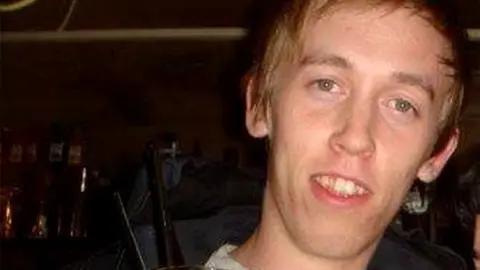
At the police station, a trace of the mobile phone number showed that the caller - Stephen Port - lived in the flat right next to where Anthony's body was found.
Police visited him and he immediately changed his account of what happened. The bus garage chef claimed he had returned from a night-shift to find "a male lying in my front door" and had called 999.
A police records check at the station revealed Port had previously been accused of drugging and raping a teenager, but somehow investigators on the ground did not become aware of this for several days.
The case was then left with local officers from Barking, rather than being taken on by a specialist Scotland Yard murder investigation team.
Anthony's mother Sarah Sak says the call she received from police was so brief it was like a discussion about a lost pet. She says police liaison officer, DS Paul Slaymaker, described Anthony's death as "not suspicious at the moment".
But she knew this was wrong. "It just started literally from day one. They just weren't interested - they just didn't listen to any of us," she tells the BBC.
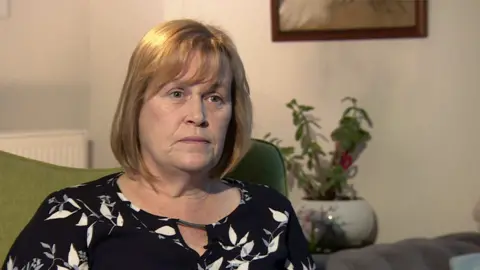
Anthony's friends, who also realised something was seriously amiss, told officers he had travelled to Barking to meet a new client who called himself Joe Deen. Anthony had shared a photo of the man with them - and that person turned out to be Stephen Port.
Port was arrested for lying to police about his dealings with Anthony, and was questioned at Barking police station - but only by a junior borough detective on his own. The killer gave a rambling and inconsistent account, ultimately claiming the deceased had visited his flat, died after taking his own drugs, and he only placed Anthony outside after panicking.
At the recent inquests, the junior officer revealed that he thought Port had killed Anthony and that an experienced homicide team should have carried out the interview.
At this point, DCI Tony Kirk, head of Barking and Dagenham CID, asked for a murder inquiry team to take over. He messaged a senior Scotland Yard homicide detective to say Port had previously drugged and raped someone and that, on balance, it appeared Anthony had died "at the hands of another".
He added: "I feel we as an organisation have a duty to his friends and family to get to the bottom of his death in what are increasingly suspicious circumstances."
The request was refused, but specialist detectives were sent to interview Port. They obtained more information from him, yet, according to details from the inquests, failed to follow a basic interview strategy or challenge Port on things he said.
Unprompted, the killer revealed that he had previously been searched and questioned by police at Barking railway station after helping out a friend who was unwell.
Officers thought this information seemed significant and left a note for the borough team. But nothing was done to establish any more detail and Port was released on bail.
A police intelligence log, available on a national database, would have shown Port was referring to an incident two weeks before Anthony's death, when British Transport Police were called to reports of him assaulting an unwell man at Barking station. But a basic check wasn't made.
Port had claimed the man had possibly taken "G" - a reference to GHB - and he had found him on drugs outside the flat after they met online. It was not until more than a year later - by which time four men had been killed - that a murder investigation team traced the victim of the assault. He described having been surreptitiously drugged, waking naked and disoriented in Port's flat.
Homicide officers now accept they would have taken on the case had they known about the incident.
Months after Port's police interviews, he was charged with perverting the course of justice for lying about his dealings with Anthony. But nothing more was done to investigate the death itself - Scotland Yard's homicide division was not contacted again by Barking officers despite an order for them to be updated and consulted on developments.
The inquests would also hear that, at that time, formal advice from homicide officers to check a laptop and phone belonging to Port was ignored. Had they been sent for forensic analysis Port's obsession with drugging and raping young men would have been uncovered.
When they were eventually analysed the following year - after a request from a coroner - they showed that Port had persistently watched "drug rape" pornography. Even then, a detective failed to even look at the relevant sections of the forensic report. By then, police had closed their investigation.
An interaction with a coroner showed the investigation's poor grasp of key details.
DS Martin O'Donnell, who was managing the inquiry, told the coroner that Port "stated he hadn't used escorts before and didn't know about the costs" even though he had told detectives he used male prostitutes and had worked as an escort himself.
Anthony's mother, Sarah Sak, was so concerned by the lapsed police investigation and unhappy with her liaison officer, DS Slaymaker, that she was forced to approach her MP for help.
The killer had "literally got away with murder", Ms Sak says now. She believes detectives "just couldn't be bothered" to investigate properly.
Gabriel Kovari and Daniel Whitworth
While he was on bail, Port went on to kill two more young men.
Gabriel Kovari, a 22-year-old from Slovakia who was planning to work as a translator, became Port's flatmate in August 2014. He was killed within days.
His body was discovered by a dog-walker in a Barking graveyard near Port's flat. Like Anthony, his mobile phone was missing and he was eventually found to have died due to a GHB overdose.

Police treated the death as unexplained but not suspicious. The resulting inquiries were shallow.
John Pape, with whom Gabriel had lived in south London for several weeks, was contacted as his was the last known address. Pape said that Gabriel had headed east, but he did not know where.
Detectives could have discovered that he moved to Cooke Street - where Port lived - if they had sought out a man who helped Gabriel move to Barking. The young Slovakian had sent his friend a map showing the new residence and several photos from inside Port's flat.
In September 2014, three weeks after Gabriel died, the body of Daniel Whitworth was found in exactly the same spot of the same graveyard by the same dogwalker. Daniel, too, had died of a GHB overdose, and his phone was missing.
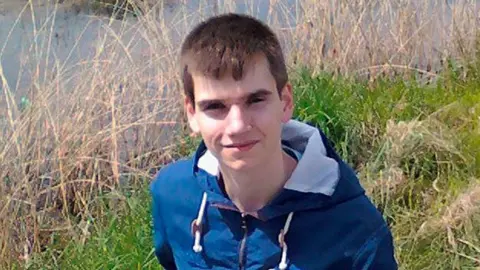
The ambitious young chef lived in Gravesend and had no connection to Barking. On him was an apparent suicide note claiming he had accidentally killed Gabriel, and had taken his own life as a result. The note had actually been written by Stephen Port, but police fell for his lies.
Taken at face value, which the police did, since the note referred to an apparent homicide, Scotland Yard policy demanded a murder investigation team take the lead.
Homicide detectives were consulted, but the death was never investigated by them. Again, the case remained with local officers. Their performance was a disaster. No forensic tests were conducted on items found with Daniel and Gabriel. Had they been, Port would have been identified since his DNA was on record.
Police could have established the "suicide note" was fake if they had scrutinised it properly. It was not sent to a handwriting expert, despite promises being made to Daniel's family.
His father Adam Whitworth was emailed a small piece of the note, with DC Yinka Adeyemo-Phillips of Barking police then telling officers that he had confirmed the writing as Daniel's.

But Mr Whitworth says he never confirmed it, and says he has "no idea" how the detective decided he did.
"She has done an abominable thing there and it's led to tragic consequences," he says.
The note also stated "btw please do not blame the guy I was with last night". Officers failed to establish that person's identity. If they had, it would have led them to Stephen Port.
Weeks after Daniel's death, his father was shown the full note by DS Slaymaker, who also worked on the Anthony Walgate inquiry.
"The first thing I said to him was, there's nothing in here that identifies it as Daniel, there's no names of anybody, there's no words and phrases that he would use," says Mr Whitworth.
"Slaymaker had an opportunity there in that room, when we was telling him our concerns, to put that right."
Detectives also refused to show the note to Daniel's long-term partner, Ricky Waumsley, with whom he shared a home and a bank account, after refusing to class him as next of kin.
He says "I felt like I was being put to one side and I felt like they were being homophobic towards me. If it was a straight woman who'd been found dead, and that was my partner, I think I would have been treated very, very differently."
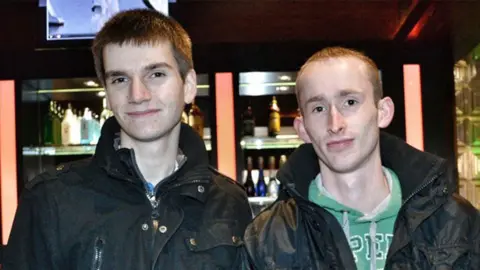
Questioned about Daniel's whereabouts at the time Gabriel had died in east London, Ricky Waumsley checked his phone and told officers they appeared to have been together at home in Kent, far from Barking.
This gave Daniel an alibi and meant he could not have killed Gabriel. But officers ignored this fundamental point. DS Slaymaker, was ordered to get mobile phone data, which would have shown Daniel's real location on the key date, but failed to do so.
In reality, the victims never met one another.
Mandy Whitworth, Daniel's stepmother, says being told by police that Daniel was a killer was incredibly distressing. "I don't think I can even tell you not only how angry that has made us, but how deeply that has wounded us for life."
Detectives also ignored a series of warnings about the two deaths being linked to that of Anthony Walgate.
Gabriel's former flatmate John Pape and boyfriend Thierry Amodio both suggested there might be link, after reading an anonymised local newspaper report about the earlier death. But they were ignored.
Amodio, making his own inquiries, ended up in contact with a Facebook user calling himself Jon Luck. This person appeared to know important information about the last days of Gabriel and Daniel and made alarming suggestions about parties at which young men were drugged and exploited. He was plainly a central witness.
Amodio sent the Facebook account to DC Adeyemo-Phillips but nothing was done to investigate the account or the person behind it. It turned out to be a fake account used by Stephen Port to spread lies.
Officers did not bother taking a statement from Amodio, who lived in Spain, and refused to keep him updated as they did not regard him as 'next of kin'.
When Amodio resorted to emailing the local coroner for information, one of the leading detectives on the case - DS Debbie Turrell - wrote to her colleague that he was "fishing for information".
Pape persistently contacted detectives to raise concerns about the threat to gay men, but he was totally ignored. In one email he wrote: I worry about what is happening to young men in Barking".
He resorted to asking LGBT organisations to contact the Met, but the force continued to be dismissive.
The officer who ignored Pape's warnings was DC Jacqueline Baxter, who had also been appointed as "family liaison officer" for Gabriel's family in Slovakia.
But she failed in her role by not making any effort to contact them.
DC Baxter then misled a coroner's officer. In an email, she wrongly stated that "uniformed officers kept this case as it was not deemed suspicious.
She then named the wrong country by stating, "I just dealt with the burial company in Lithuania".
The inquests also heard about serious failings by DI Rolf Schamberger, who oversaw the Barking and Dagenham Police team that examined the deaths of Gabriel Kovari and Daniel Whitworth.
He signed off a series of actions as complete, even though they had not been carried out, such as the crucial demand to obtain phone data on Daniel.
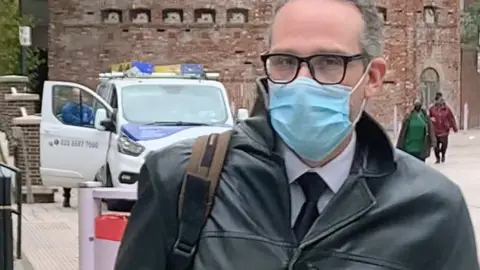
Schamberger personally prepared flawed reports for the men's first inquests, which took place in June 2015, giving evidence at both.
He falsely told the coroner that a "diary" had been used to confirm Daniel Whitworth's handwriting on the suicide note, even though no diary was ever seized.
Having been asked at Gabriel's first inquest in 2015 about a possible link to the death of Anthony Walgate, the detective said "there was consideration given to there being a link, but, to the best of my knowledge, no link was ever established".
The officer, who has since been promoted, claimed at this year's inquest not to have known anything about Anthony's case at the time, saying it is "hard to say" what he meant in his answer back then.
In 2015, Schamberger told the coroner that no testing had taken place on a bedsheet found with Daniel's body, contrary to a pathologist's recommendation, adding the "circumstances at the time indicated towards no other external parties being involved".
He now says he "can't really explain" that answer, given the investigation had considered the possibility that other people might have been involved.
The bedsheet was covered in the killer's DNA.
Even before the pathologist's report on Daniel had concluded, the detective had written "the investigation is complete and the report can be closed".
Jack Taylor
Jack Taylor was found dead in September 2015, slumped against the other side of the graveyard wall to where Gabriel and Daniel had been discovered.
Like the other three young men, his phone was missing and he died of a GHB overdose. Like the others, he was not a user of drugs, meaning the circumstances were unusual.
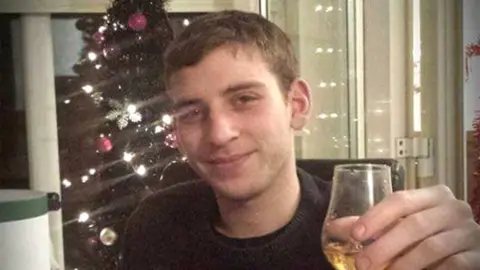
Despite some detectives attending the scene who had been present at the earlier deaths, no connection was made to them. Officers decided Jack's death was non-suspicious.
The Taylor family were briefly visited and told that Jack had died, but then heard nothing more from police.
PC Jon Taylor, whose job was to patrol local parks, found out he was running the investigation from a digital crime report entry, rather than because anyone told him. He was not a detective but had been put in charge because he had been the person flagged down in the street when the body was discovered.
He asked for help from the local CID team - the same unit that had run inquiries into the earlier deaths - but a detective refused and stated: "I deal with more protracted/unexplained deaths".
Almost a fortnight had passed when Donna Taylor, Jack's sister, contacted the Met, furious at the lack of contact.
In that time Donna and younger sister Jenny had launched their own investigation, spotting the links to the earlier deaths.
"We should never have had to investigate and do everything behind the scenes ourselves," says Jenny Taylor. "Why couldn't they have done that? Saying they didn't have enough resources or enough training, we've got no training, we had no resources, we had a laptop - that's all we had - and it makes us very angry."
The Taylor family kept pushing the police to do more.
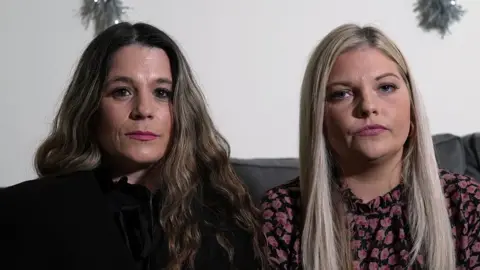
For example, when police confirmed there was CCTV of Jack meeting a tall man at Barking station and walking away together, the Taylor sisters insisted that officers issue a public appeal to identify the stranger. At first, officers refused to do so, but relented following pressure from the sisters.
It was one of the original Anthony Walgate detectives who recognised the tall blonde stranger as Stephen Port after seeing the appeal images on a colleague's desk.
Donna Taylor says the Met "didn't look into anything" and have "allowed that man to take three innocent people's lives".
Families of the dead men say the Met made false assumptions about their loved ones, with homophobia playing a role in the flawed decision-making.
Scotland Yard accepts failing the victims, but denies that prejudice was a factor.
Assistant Commissioner Helen Ball said: "I don't think the Met is an institutionally homophobic organisation. I do think that we need to make a great deal of change to our investigative practices. We have done that - and people need to be reassured that we have done that."
Seventeen police officers involved in the original response into the four deaths were investigated by the police watchdog.
The Independent Office for Police Conduct did not refer any of them for misconduct proceedings. Seven of the officers have since been promoted.
The Taylor sisters, whose persistence led the police to the killer, say they will not accept this result. "We've never gone away - the Taylor family, the Taylor sisters - will never will go away. We want to see people held accountable."
